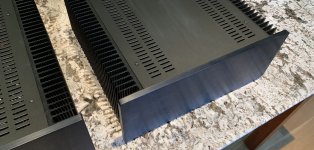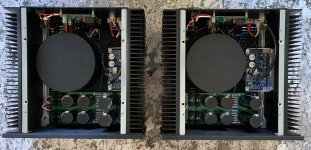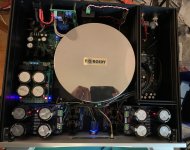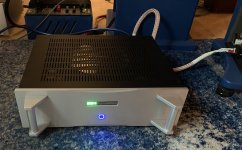I've built two pairs of monoblock amps using Neurochrome boards. The first pair are based on Neurochrome's Modulus-286 amp modules. These are class AB amps based on a composite architecture using two LM3886 chip amps in parallel with an opamp based error correction circuit. They deliver about 65w/channel into 8ohms (close to double that into 4 ohms). I built them using a fairly beefy 400VA power supply with a soft start circuit.
The second pair of amps are class D using the Purifi 1ET400a modules and Neurochrome's buffer boards. Unlike most class D builds, I used a large linear power supply, partly because my previous experience with the Nord Hypex amps which used SMPS was a bit disappointing, and partly because I could design and build it myself instead of slapping a completed power supply module in the box. This is not the most cost effective approach, and it also weighs a lot more than a typical class D amp at just over 50lbs for each monoblock, but the end result came out very nice and sounds excellent. The power supply uses a 1500VA Toroidy Audio Supreme transformer and approximately 200,000 uF of filter capacitors.
Tom's designs are very well engineered to delivery very low noise and distortion. Based on the two designs I've done, they have a very neutral sound without introducing much of their own character. My speakers are fairly efficient (93db/w) and are easy nominally-8-ohm loads, so the Modulus-286 based amp has enough power to play them fairly loud. But I'm finding the Purifi-based amp to be more dynamic with more punch in the bass and perhaps a bit more detail. Both amps sound quite good with a similar presentation, although I think the Purifi amp has a bit larger sound stage.
After I've had a bit more time listening to the Purifi amp, I plan to experiment with other buffer designs. The Purifi amps only have a few hundred hours on them, and have only been in my main system for a week. So they may still be breaking in.




